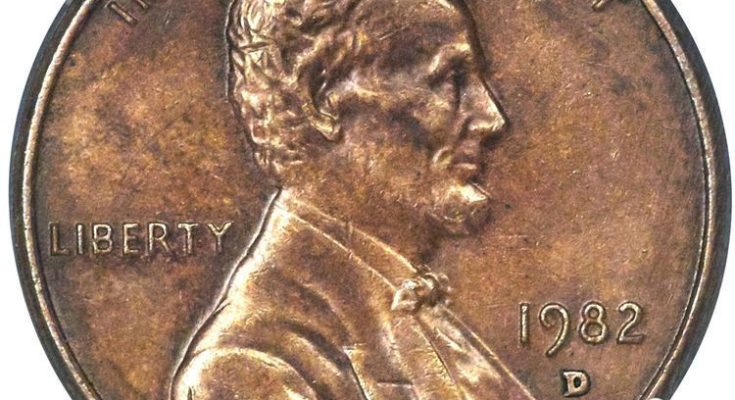In 1982, the U.S. Mint underwent a historic transition, changing the composition of the Lincoln cent from its traditional 95% copper alloy (often referred to as ‘bronze’ by collectors) to a much lighter, copper-plated zinc core. This shift, driven by rising copper prices, created a unique numismatic opportunity: a rare “transitional error” coin that can be worth thousands of dollars. While most of the over 10.6 billion pennies minted that year are only worth face value, a select few are highly sought after by collectors, with auction values that can reach or even exceed the $10,000 mark.
The valuable variety is a specific combination of factors: the 1982-D Small Date Copper Cent.
Why the 1982 Penny is Special
The year 1982 produced eight different varieties of the Lincoln cent, due to a combination of two design changes and two compositions being used.
- Composition Change: The U.S. Mint switched from the heavier 95% copper alloy (weighing about 3.11 grams) to the lighter 97.5% zinc core with a copper plating (weighing about 2.5 grams).
- Date Design Change: The mint also slightly modified the obverse design, resulting in both a “Large Date” and a “Small Date” variety for the year.
The truly rare coin is a transitional error—a Small Date cent mistakenly struck on an old 95% copper planchet at the Denver Mint. The Denver Mint (indicated by a “D” mint mark) was supposed to use only the new, lighter zinc planchets when striking the Small Date coins. Only a few of the 1982-D Small Date Copper Pennies are known to exist, making them extremely rare and valuable. Authenticated, high-grade examples of the 1982-D Small Date Copper penny have fetched auction prices ranging from $10,000 to over $18,000.
How to Check Your Penny
To determine if your 1982 penny is a rare treasure, you must verify three key characteristics:
- Mint Mark: Look for a small “D” mint mark below the date “1982,” indicating it was struck at the Denver Mint.
- Composition (Weight): This is the most critical step. You need a highly accurate jeweler’s scale. The valuable copper variety must weigh approximately 3.11 grams. If it weighs about 2.5 grams, it is the common zinc variety.
- Date Style (“Small Date”): Compare the size and style of the numerals. The “Small Date” variety has noticeably thinner numbers. Specifically, on the Small Date:
- The top loop of the “8” is smaller than the bottom loop.
- The diagonal part of the “2” is curved.
- The tops and bottoms of the “1,” “8,” and “2” digits are aligned, set along an imaginary line.
Only a coin that meets all three criteria—1982, “D” mint mark, Small Date, and a weight of 3.11g—holds the potential for a significant numismatic value.
Other Varieties and Next Steps
While the 1982-D Small Date Copper is the star, other 1982 copper varieties exist, but they are much more common and generally worth only a few dollars, though they can reach higher prices in uncirculated condition. For instance, a 1982 Small Date Copper with no mint mark (Philadelphia-minted) can be worth up to $50 or more in uncirculated grades.
If you believe you have found the rare 1982-D Small Date Copper penny, the most important next step is to seek professional authentication. Given the high value and the existence of many common variations and counterfeits, a professional coin grading service can confirm its authenticity and assign a grade, which will determine its market value. The search for this elusive penny is a perfect example of how an everyday coin can hide an extraordinary value, making every handful of change a potential treasure trove.



